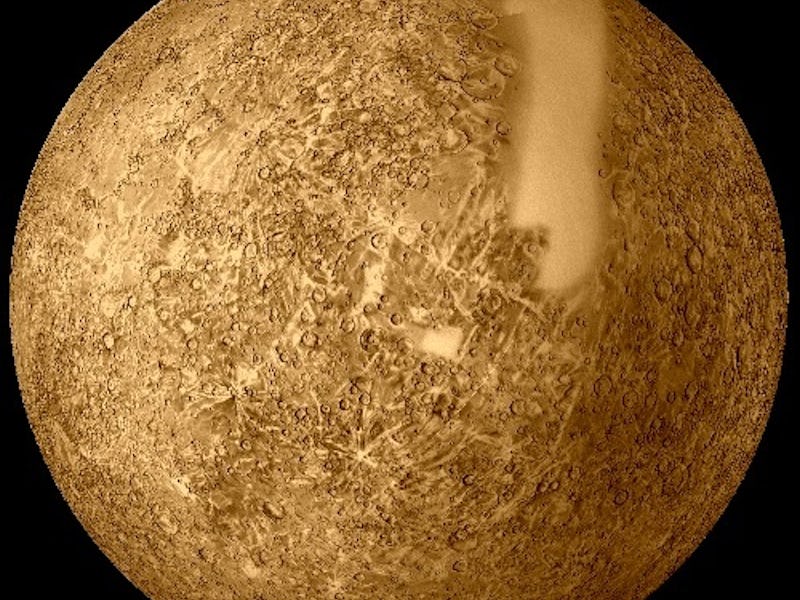How to See Mercury When It Comes Out of Hiding Tonight
Tonight is a great night to try to spot Mercury.

Mercury will be at its greatest eastern elongation tonight. What that means is most of us will be able to see it just above the horizon with a good pair of binoculars.
In this phase of a planet’s orbit, using Earth as our reference point, the observed planet’s angle — in this case, Mercury — is greatest. Simply: first, draw an imaginary line from our planet to the sun, then draw another starting from the same point here on Earth to Mercury. As the Earth and Mercury make their orbit, the length of the lines will change, as will the angle between them. When these two lines reach their greatest angle, the greatest amount of Mercury’s surface is exposed for us to see here on Earth.
Not a perfect analog, but a visual representation of what and interior elongation entails.
For the inferior planets, the ones between the Earth and the sun, the greatest elongation happens a few times a year. Tonight’s elongation of 27 degrees is just one shy of the maximum angle possible. More light reflected and more surface available adds up to some pretty ideal planet viewing.
Irene Pease, an astronomer with the Hayden Planetarium, says: “Around the time of equinoxes, the ecliptic is at a steeper angle during sunrise / sunset, so Mercury (on the ecliptic) would be not only farther from the sun as it appears in our sky, but higher above the horizon.” Both things that will increase its visibility from our perspective.
Unfortunately, there is some difference in visibility depending on where you live. People in the Southern Hemisphere shouldn’t have any trouble according to Bruce McClure, the resident astronomer for Earthsky.com. He writes, “Mercury should be fairly easy to see with the eye alone from the northern tropics and the Southern Hemisphere, starting around 75 minutes after sunset.”
North of the equator, it gets a little more difficult. The planet will not rise very high above the horizon, but if you’re sharp, you can catch Mercury, Venus, and Jupiter all at the same time, says McClure. Just follow the sun as it sets in the west, and have your binoculars at the ready. About 45 minutes after that last bit of fire winks out, the three planets should appear.
If you need more information on where to look, this great web app, maintained by In-the-sky.org, will generate a map based on your location and time. There’s also apps that use the complicated whirligigs and whatchamacallit sensors on your smartphone to show where things are in the sky, just download either the Android or iPhone app to your phone and hold it up to the heavens.